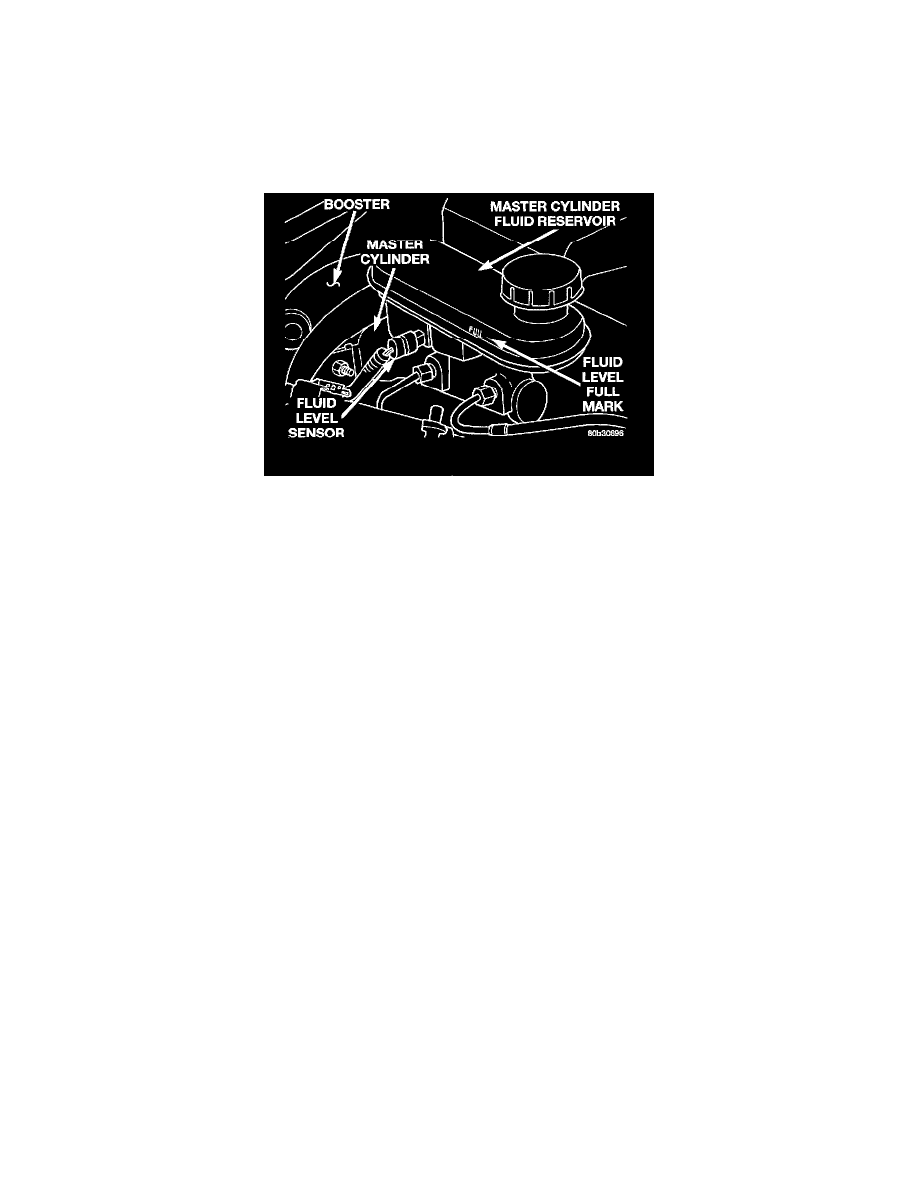Intrepid V6-3.5L VIN K (2003)

Brake Master Cylinder: Description and Operation
MASTER CYLINDER
DESCRIPTION
There are two different master cylinders used on this vehicle. A center-port master cylinder is used on ABS and Traction Control vehicles. A
conventional vent-port master cylinder is used on vehicles without ABS. Both master cylinders appear the same externally except for the size of their
outlet ports. The ABS master cylinder has outlet ports differing in size; the primary port is machined to accept a 12 mm tube nut, while the secondary
port is machined for a 10 mm tube nut. Both the primary and secondary ports on a non-ABS master cylinder are machined to accept 12 mm tube nuts.
Master Cylinder Fluid Level
The master cylinder is mounted to the face of the power brake booster on the left side of the dash. It has the brake fluid reservoir mounted on top and
the brake fluid level switch is mounted in the side of that reservoir.
OPERATION
When the brake pedal is pressed, the master cylinder primary and secondary pistons apply brake pressure through the chassis brake tubes and
proportioning valves to each brake assembly. The brake fluid reservoir supplies the brake hydraulic system with the necessary fluid to operate
properly.
The primary and secondary outlet tubes of the master cylinder are connected to a junction block on non-ABS equipped vehicles. The tube from the
master cylinder primary outlet port connects to the inboard port of the junction block, and the tube from the secondary outlet port connects to the
outboard port of the junction block. The inboard port of the junction block supplies the right front and left rear brakes. The outboard port of the
junction block supplies the left front and right rear brakes.
On vehicles equipped with Antilock Brakes (with or without Traction Control), the master cylinder primary outlet port outlet tube connects to the
inboard port of the ICU, and the secondary outlet port outlet tube connects to the outboard port of the ICU.
The master cylinder reservoir cap diaphragm is slit to allow atmospheric pressure to equalize on both sides of the diaphragm.
